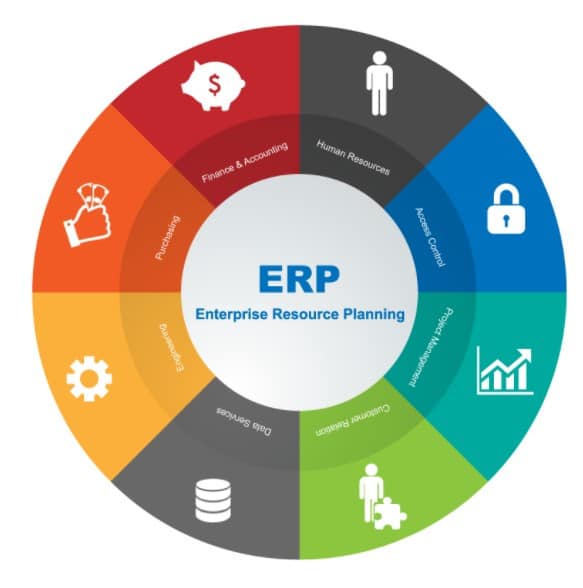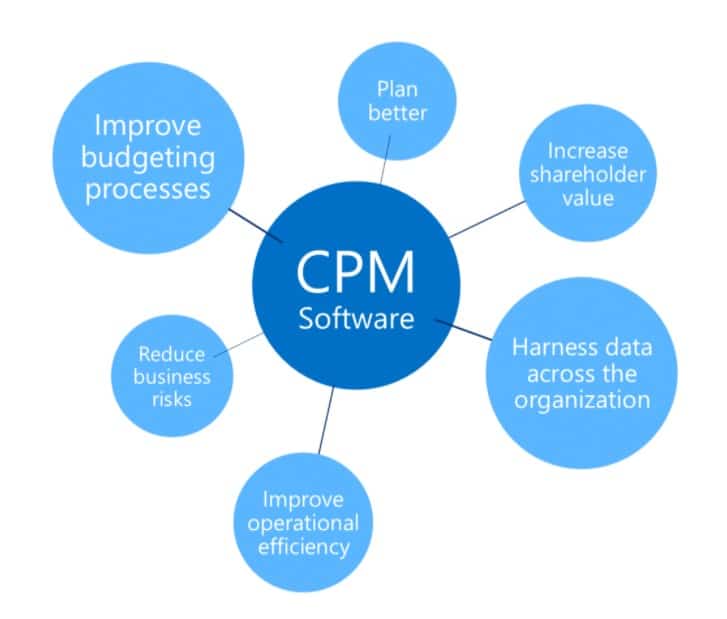
ERP and CPM systems have become working parts of most IT infrastructure over the last decade, but understanding what each system does will help your organization get the most out of its systems.
Both systems bring a great deal of value to an organization, but unfortunately, it is often the case that only one system or the other is being used, when the synergy between the two systems often leads to greater efficiency and the ability to find chances to remove redundancies and create a more efficient, more effective organization.
Often the two terms are misconstrued to mean the same thing because they are both planning applications. Highlighting the differences in these applications will help you to assess whether your organization needs one, both, or is using them to their fullest potential.
ERP – Enterprise Resource Planning
ERP systems have the primary objective of maximizing efficiency by automating transaction flow across various business functions. By automating transactional data flow throughout the organization, it ensures accuracy and consistency in the way data is treated.
The name Enterprise Resource Planning highlights its intended use, which is to assist in the business planning process by collecting, storing, managing, and interpreting data from various business functions.
It is often used in supply chain management and order processing while simultaneously assisting finance and accounting through automated booking of journal entries into various accounts.

How Does an ERP System Work?
Any ERP is comprised of two primary pieces: a set of business processes and a database. The database acts as a centralized database for all of the business processes, thereby reducing the manual effort to conduct operations. It usually reports to end-users in the form of a dashboard and can convey real-time data from across the business to track productivity.
Typically, an ERP is integrated into various levels of the organization. For example, there might be a supply chain ERP that can receive and automate customer orders. It does this by communicating with other business functions to identify inventory availability, notifying picking departments, generating shipping labels, and then tracking orders for shipment.
In almost any case, data becomes captive in the various departments that create and maintain it. This makes it difficult for various departments to integrate with one another smoothly and efficiently. An ERP reduces the drag created by siloed data and allows for multiple departments to share and visualize data that is needed to complete a business process.
Pros and Cons of an ERP System
When evaluating potential systems to implement in your organization, it is always prudent to identify the value add and cost-benefit.
| ERP Pros | ERP Cons |
| ● Provides real-time tracking of key performance indicators. | ● High cost to purchase and implement. |
| ● Assist in optimizing business resources. | ● The burden of training while conducting regular business post-implementation. |
| ● Ensures accuracy and consistency of data through automation. | ● Requires significant investments in IT infrastructure. |
| ● Removes process redundancies and manual inputs. | ● Risk of data loss during migration from various data sources into the ERP. |
| ● End users’ interface through simple dashboards and interactive reporting. | |
| ● Reduces department silos. |
CPM – Corporate Performance Management
Corporate performance management systems have the primary objective of assisting an organization in executing its goals and plans by providing insight into various planning processes. It does this by collecting data from various systems across an organization and monitoring the business’s performance and adherence to its plans.
The goal of a CPM is to provide insight through planning processes like budgeting and FP&A, and a CPM is typically aligned with the various finance functions of an organization. It is important to note that a CPM system is separate from the term “CPM,” which has become associated with a set of best practices that includes the creation of a business model, budgeting, planning, forecasting and monitoring results.

How Does a CPM System Work?
A CPM software integrates various financial information, which includes details from financial statements, budget data, and forecasting data. It takes this data and compiles it into relevant information to assess the performance of various business processes.
The software or system is a conglomerate of business tools that work together to measure business performance. This requires that management develop and implement its own measurement standards for the CPM to monitor and report. Some of the more common performance frameworks are balanced scorecards, EFQM excellence models, MPOs, Six Sigma, and Key performance indicators (KPIs).
One critical element of any CPM is that it must develop clear expectations and results. Without this, the metrics to measure performance will be muddled and useless.
Pros and Cons of a CPM System
One important consideration when analyzing a CPM system is whether or not your organization is already utilizing a CPM process or framework. Before implementing a system that assists in CPM execution, it is important to have the CPM process in place.
| CPM Pros | CPM Cons |
| ● Aligns business strategy and goals with planning and execution. | ● Requires the use of relevant measurement techniques in order to produce quality insight. |
| ● Provides real-time data on adherence to plans and projections. | ● The output is dependent on measurement tools that could be irrelevant or unnecessary. |
| ● Gives users the flexibility to view various KPIs and performance metrics at one time. | ● Too many KPIs can inundate users with information. |
| ● Allows for better project management by aligning project plans with business execution. | ● Insufficient planning might result in the underutilization of a CPM system. |
CPM vs ERP – Better Together?
The two systems are distinctly different systems that set out to accomplish similar goals. ERP systems take aim at optimizing business functions in order to maximize profitability, where CPM systems attempt to monitor business functions to ensure they are operating effectively. Therefore, the two systems are extremely compatible with one another and can work together to address specific issues that arise.
While the systems are related, their purposes are very different, with ERPs often acting as a sort of engine that is essential to business growth and CPMs acting as the system of sensors that monitor the engine’s performance.
CPM systems typically source some of their data from the ERP database but also layer in information received from HCMs, CRMs, and other sources. Each system is important to the effective operations of a business, with an ERP being focused on business execution and CPMs primarily focused on business navigation and management.
While it is absolutely possible to have one without the other, bringing both technologies together brings synergy to a firm’s business processes and ensures that greater efficiency and effectiveness are achieved. Combining the two is common in many industries as it can drive efficiencies while monitoring for possibilities for growth.
Using Datarails as CPM
Adopting a CPM system is incredibly important for your organization. You need a system that can manage and make use of big data to ensure accuracy, timely execution, and of course, monitoring. Datarails is an enhanced data management tool that can help your team create and monitor budgets, plans, and other KPIs faster and more accurately than ever before.
By leveraging real-time data and integrating fragmented workbooks and data sources into one centralized location, you can work in the comfort of excel with the support of a much more sophisticated data management system behind you. Build beautiful budgets, track and monitor business performance, and give users stunning and easy-to-use dashboards with Datarails.
Learn more about the benefits of Datarails software>>